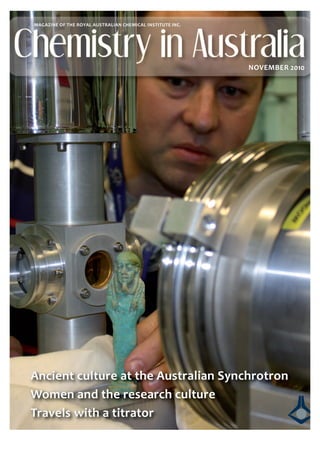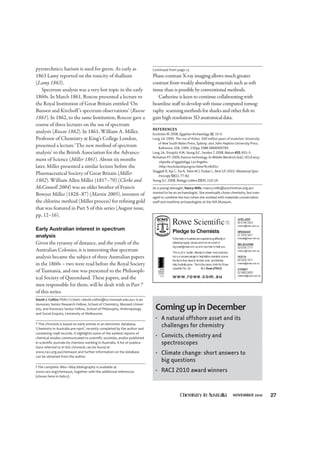This document discusses the use of ancient Egyptian shabti figurines and faience ceramics in burial practices from 2000-340 BCE. It then describes ongoing research using the Australian Synchrotron to analyze the chemical composition and production techniques of faience through non-destructive testing. This includes identifying that copper was used to create the characteristic blue-green glaze but the form of copper used is still unknown. The research aims to better understand faience and the role of women and trade in its production.





